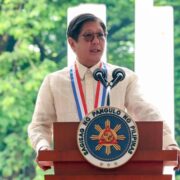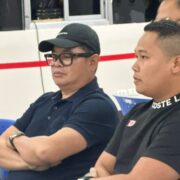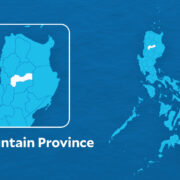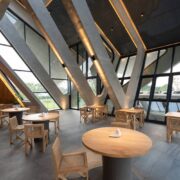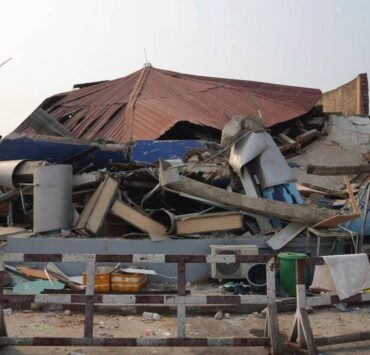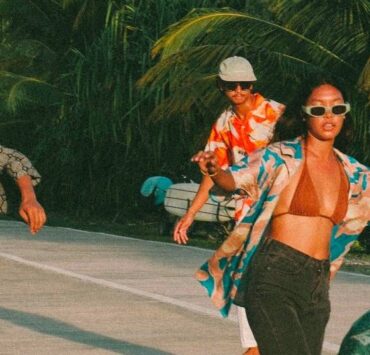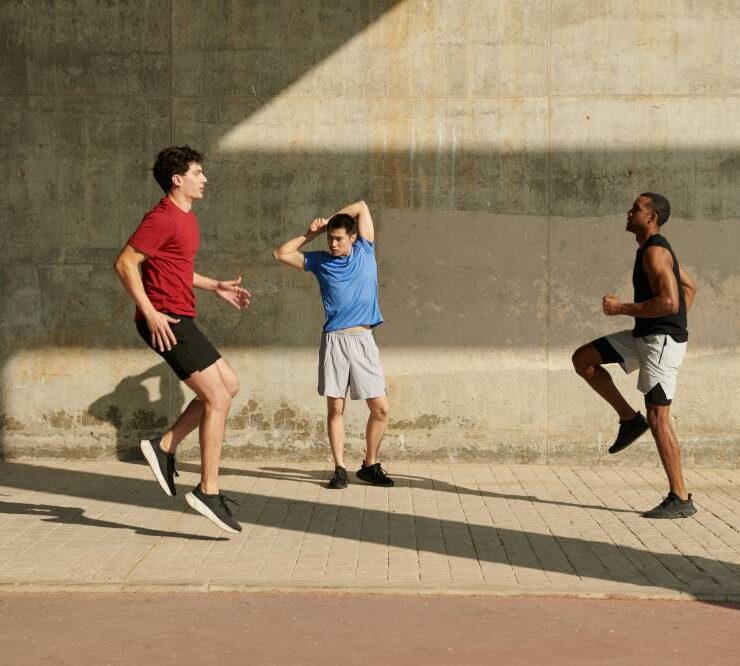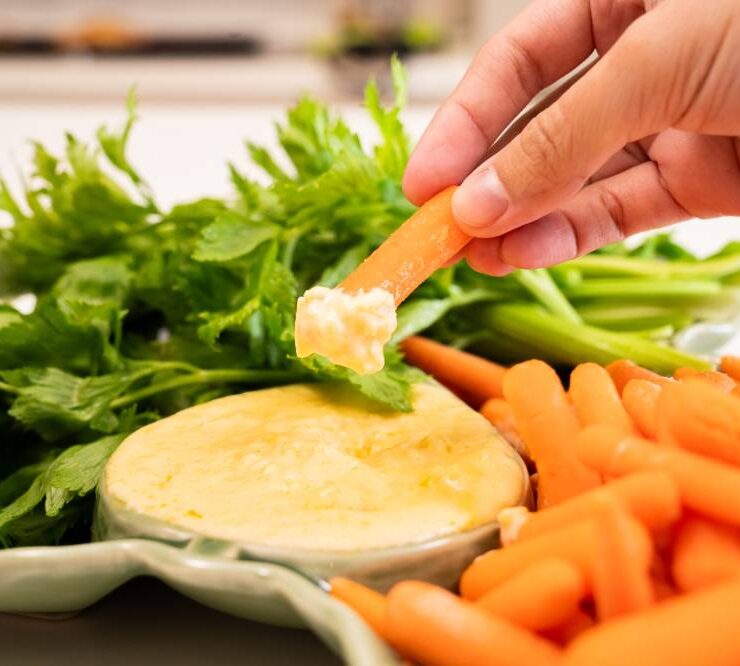Sportswear with Pinoy flair
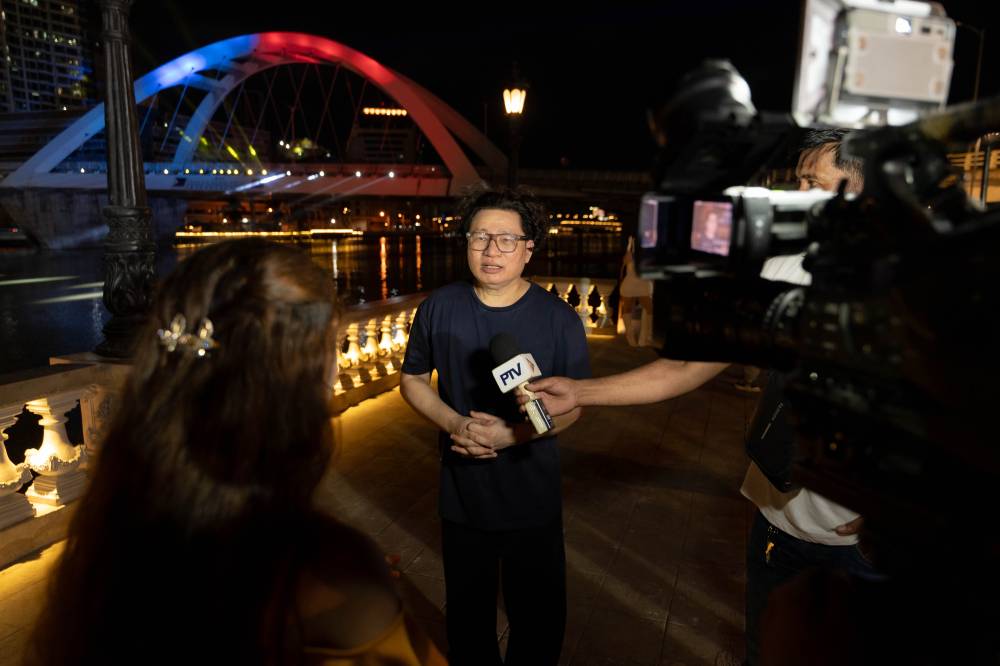
The venue for designer Avel Bacudio’s latest collection was Plaza Mexico in Intramuros. As the sun set, guests who had been asked to come in white were led to chairs that lined a portion of the renovated esplanade.
There were no obstructed views, as everyone was given a front row seat—the better to view the designer’s take on sports luxe. The walkway had been cleared for the evening and the street lamps cast an enchanting glow. Even the Pasig River looked harmless in the dim light.
As we waited for the show to start, instrumental versions of original Pilipino music (Hotdog’s “Manila” and Lola Amour’s “Raining in Manila”) played on speakers dotting the perimeter. This was replaced by the movie theme from “2001: A Space Odyssey.” Athletes and students from the National Academy of Sports in Tarlac opened the show, walking the length of the esplanade-turned-runway with actual models.
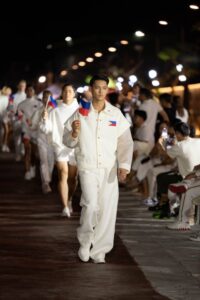
The assortment of zip-up sweaters and hoodies in bright, primary colors of red, blue and yellow looked fresh and wearable. Bacudio also came up with drawstring pants, blazers and sports jackets as well as a hybrid vest with barong-style sleeves. His two-toned bomber jacket with dropped shoulders would look good on and off the court.
Details came in the form of color-blocked lapels, and racer stripes running down the outseams of roomy pants. There were also a couple of blousons—soft and roomy jackets cinched at the waist—that gave off a kimono-like vibe. Accessories included narrow neck scarves in a contrasting pattern.
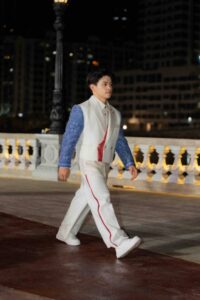
Two-time Olympic gold medal winner Carlos Yulo closed the show in a white double-breasted jacket with blue patterned sleeves, and roomy white pants.
Only when the models drew closer could guests see the raised inabel patterns and woven details that looked like those common in Mindanao. After the show, we were able to touch and examine a few of the pieces, including a fitted jacket with a cotton lining.
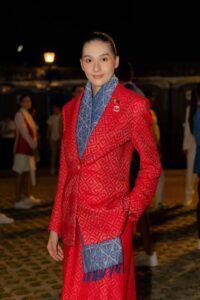
Philippine flag
Bacudio said that it took a while for him to collect all the fabric needed to make the collection, as the weavers could only work so fast.
“I couldn’t change the patterns as some of them tell a story. What I could do was play around with the colors, and I chose to have them in the colors of the Philippine flag,” the designer told a few writers after the show.
He also experimented with raw materials like banana leaves from Cavendish bananas grown in Davao and pineapple leaves from the fruit grown in Bukidon. “The inabel fabric from Abra is traditionally made into household linens like bath towels and blankets. The challenge was making them into something wearable and easy to use,” Bacudio said.
He explained how he used “intelligent fabric” to fuse the cotton lining to the inabel so it doesn’t shift when it’s washed by hand.
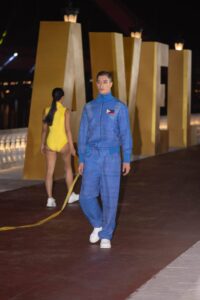
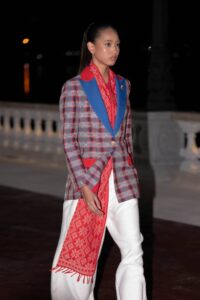
His attempt to make inabel into something that can be worn as easily as regular clothes is just one of many attempts through the years. In the early 2000s, a group of designers fashioned pieces from the fabric, presenting them in Manila and Ilocos Norte to drum up interest. A few years later, another group of designers attempted to push Mindanao silk as an option to imported silk fabric, but nothing really came of it.
Asked if he intended to sell the collection online or in stores, Bacudio demurred, saying he still had to do further research to check whether production of the woven fabric was feasible.
In a statement, he said that sustainability was not just a trend but a responsibility. “We have a wealth of natural resources and traditional skills in the Philippines, and it’s our duty to utilize them responsibly and ethically.”
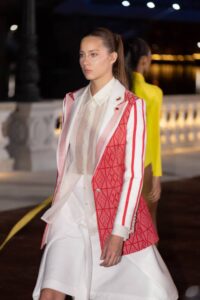
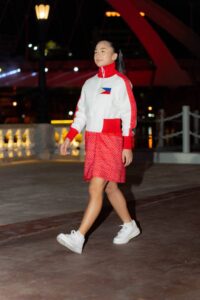
So what was his reason for presenting a “sports luxe” collection that won’t be sold anywhere any time soon? The probable answer—and one kibitzers arrived at after the show—is that Bacudio is signaling his intent to dress the Filipino team at upcoming sports events, maybe even the 2028 Olympics in Los Angeles in the United States.
“Every time we represent the country in the Olympics or in regional games, lagi na lang naka-barong. Hindi mabebenta ang barong, hindi sya puwede ilagay sa washing machine. (Our athletes are always clad in barong. It doesn’t sell, it can’t be machine washed.) The athletes want comfort. Hindi naman comportable yun. (It’s not comfortable),” he said.
Bacudio might have a point, but only time will tell whether his sports luxe looks will make it to the world stage.



